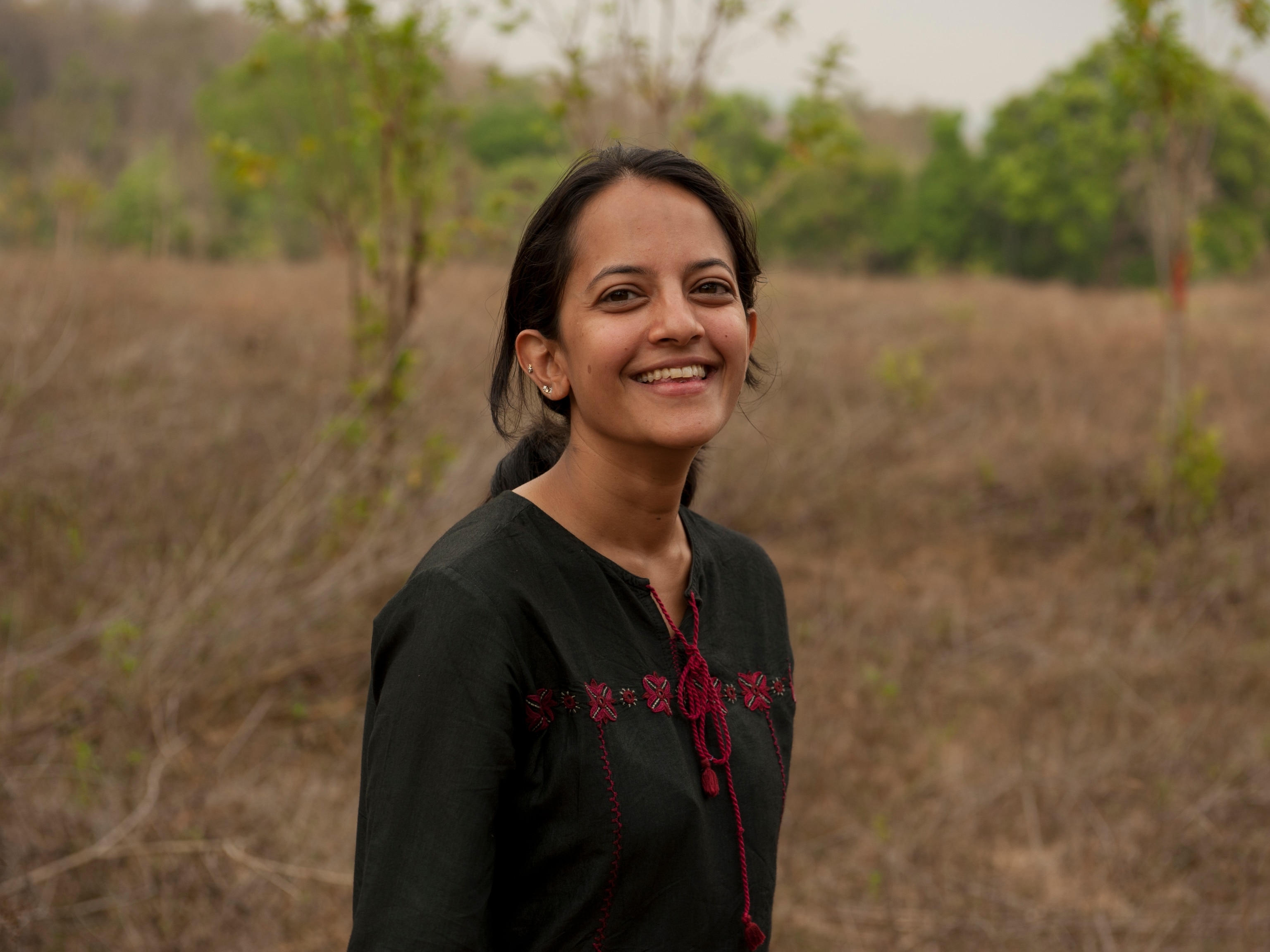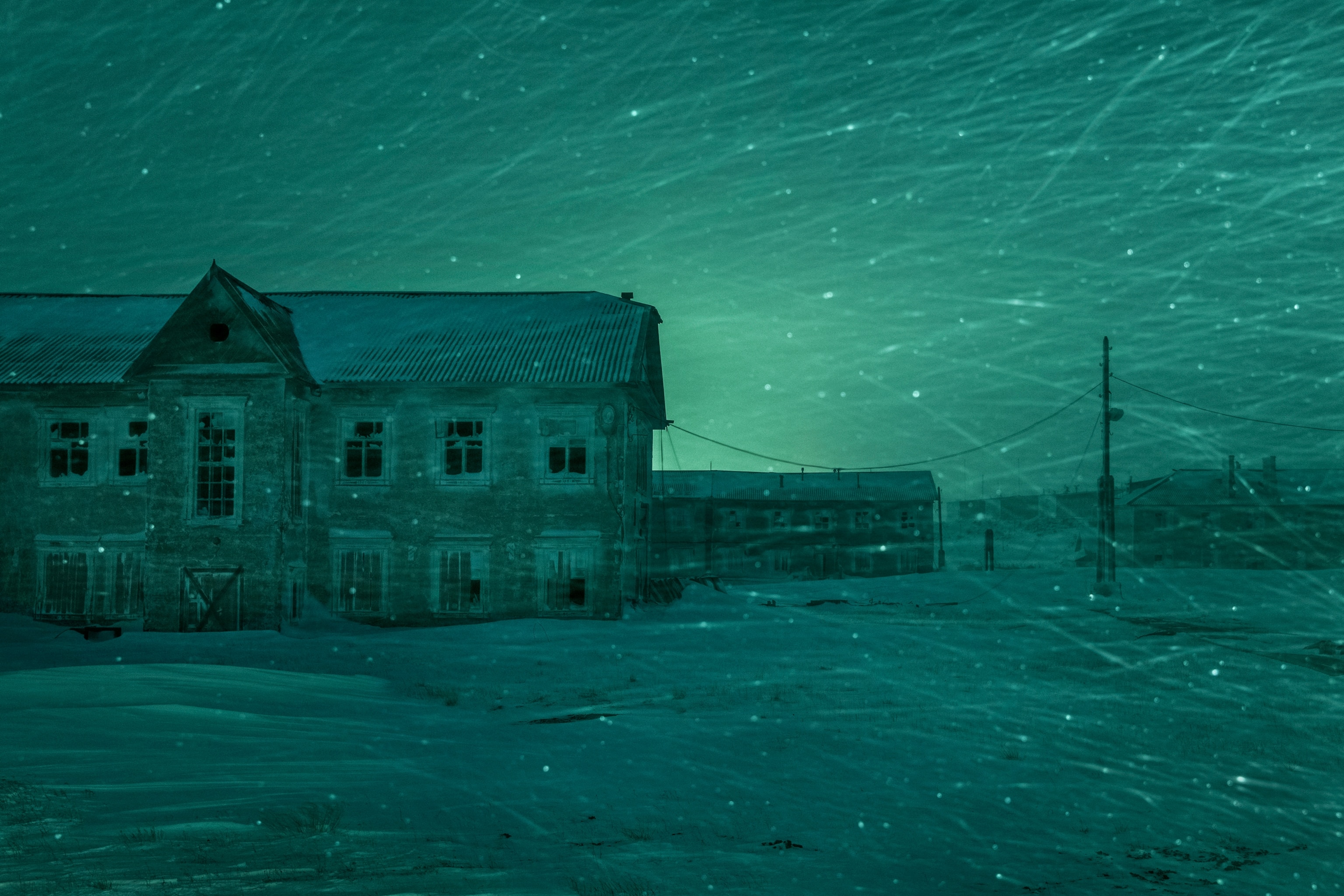
Evgenia Arbugaeva chronicles memories and magic of her Russian Arctic homeland
This Siberian storyteller’s dreamlike images reveal the world of polar living
Maybe it was hearing about Hyperborea, a mythical land of sunshine and superhumans located on top of the world, that planted seeds of imagination for National Geographic Explorer Evgenia Arbugaeva. Growing up in the Russian Arctic, one of her childhood books painted the picture of a fantasy: Hyperborea was an idyllic and far-flung place, it was inhabited by people with superpowers, and it definitely, maybe, didn’t exist.
“As a kid I thought it was real,” Arbugaeva, now an award-winning photographer and documentarian reflects.
It was decades later, aboard an icebreaker ship that the story of Hyperborea, an imaginary world, fused with reality for her. It became the title of her recently published book–the culmination of years of work traversing her Arctic homeland, documenting the stories of hard-to-reach people in seemingly uninhabitable places.
And maybe it was seeing her father transform her childhood bathroom into a film developing lab that helped Arbugaeva see the magical in the mundane. “Sometimes there would be a red light and photographs floating in the bathtub. Sometimes there would be a giant fish that my dad caught in the ocean. Always, there was something interesting floating in our bathtub.”
It flipped reality on its head a little bit. It helped her see what was possible, and it could’ve been these creative memories of ingenuity and bending reality that primed her for photographing the world through a dreamlike lens.
“I try to capture the truth. But photography can also capture imaginary worlds.”
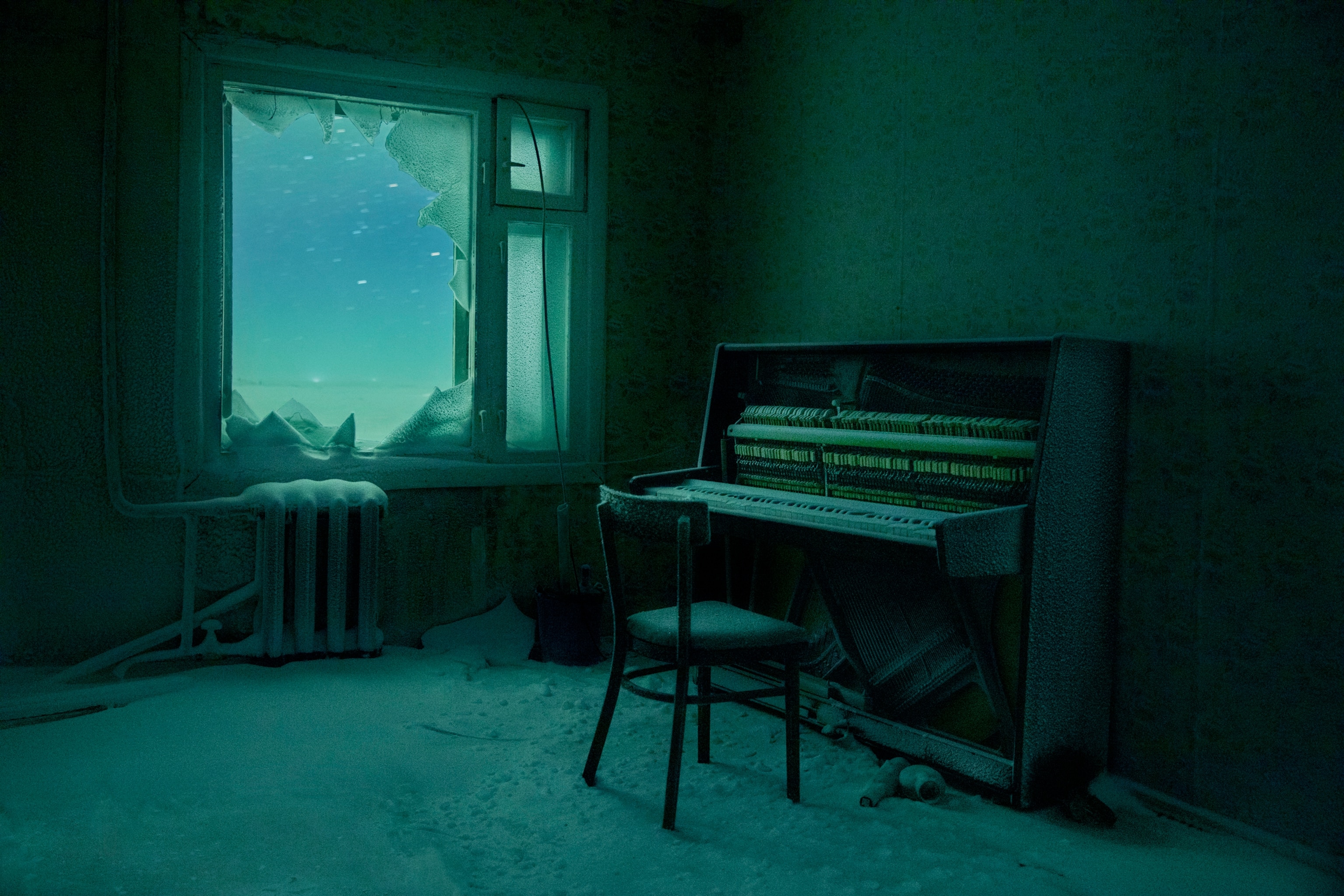
It was 2013 when Arbugaeva boarded an icebreaker ship for two and half months. She had just started to work as a freelance photographer, and was looking for stories.
“The captain had this map of Hyperborea, a reproduction of the 16th-century Greek map in his captain’s room. We were visiting all these stations, delivering supplies, and I kept thinking we were traveling in this Hyperborea land, because these people at the stations were different from us.”
Their lifestyles and environment became the subject of a trail of projects she pursued beginning in 2018, supported by the Society. She photographed hearty people in the villages in Chukotka, lighthouse keepers in Kanin Nos, and the abandoned buildings of the emptying Russian Arctic port, Dikson. The stories of people and their barely inhabited surroundings reveal a visual dichotomy: The reality of an unforgiving and dark climate pictured with an ethereal and soft glow of home.
“It takes a certain type of person to live in such isolated environments,” Arbugaeva says. “These are very strong, and very strong-willed people, but also highly romantic.”
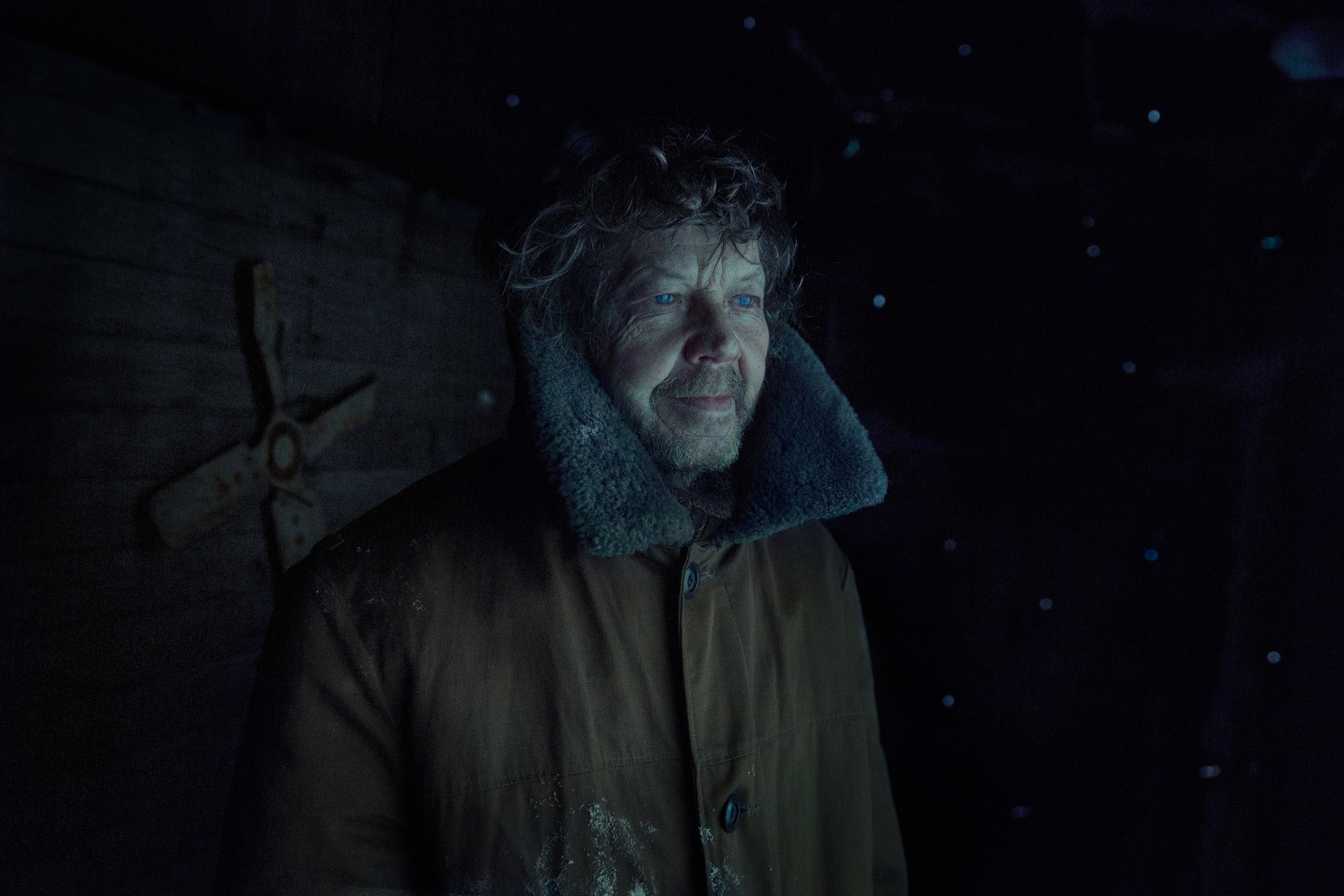
For Arbugaeva, documenting the Arctic started with a deeply personal homecoming.
Returning to her safe place
She grew up in Tiksi, a coastal Siberian town along Russia’s Laptev Sea until she was eight. Tiksi’s population was around 12,000 during its height in the 1980s as a profitable passageway for cargo traffic to inland Yakutia, before the collapse of the Soviet Union in the 1990s. As the rough halfway point between Europe and Asia, Russia recently opened the port to foreign vessels in an effort to revive the future economy of Tiksi, now home to around 4,000 people. This sliver of Arctic tundra, which people repeatedly remind Arbugaeva is harsh and cold, is her safe place.
“For me, it feels like home.”
It’s the reason she returned 20 years later to photograph it. Even now, following a few years residing mostly in urban areas, there comes a point where she says she “needs to breathe Arctic air.”
“Obviously it’s a very depressing place.” Arbugaeva doesn’t sugarcoat reality. Her playfully colorful images don’t attempt to conceal this either—it’s how she sees it. “This was my attempt to go back to that perfect world,” she says. Though when she arrived, it was nothing like she remembered.
Arbugaeva connected with Tanya, her child guide to the new Tiksi, and the protagonist of Arbugaeva’s series. Together, they immortalized magical moments of polar living; they played on frosted playgrounds and looked out to the vast sea from abandoned shipping vessels.
For the excellence of this work exploring the human relationship to the environment in Tiksi, Arbugaeva was recognized with the LOBA award. She says she could have prolonged the series, but it felt appropriate it ended when it did.
“Tanya became a proper teenager. That world that I was trying to capture, she grew out of it, and I thought that this is when we should finish.”
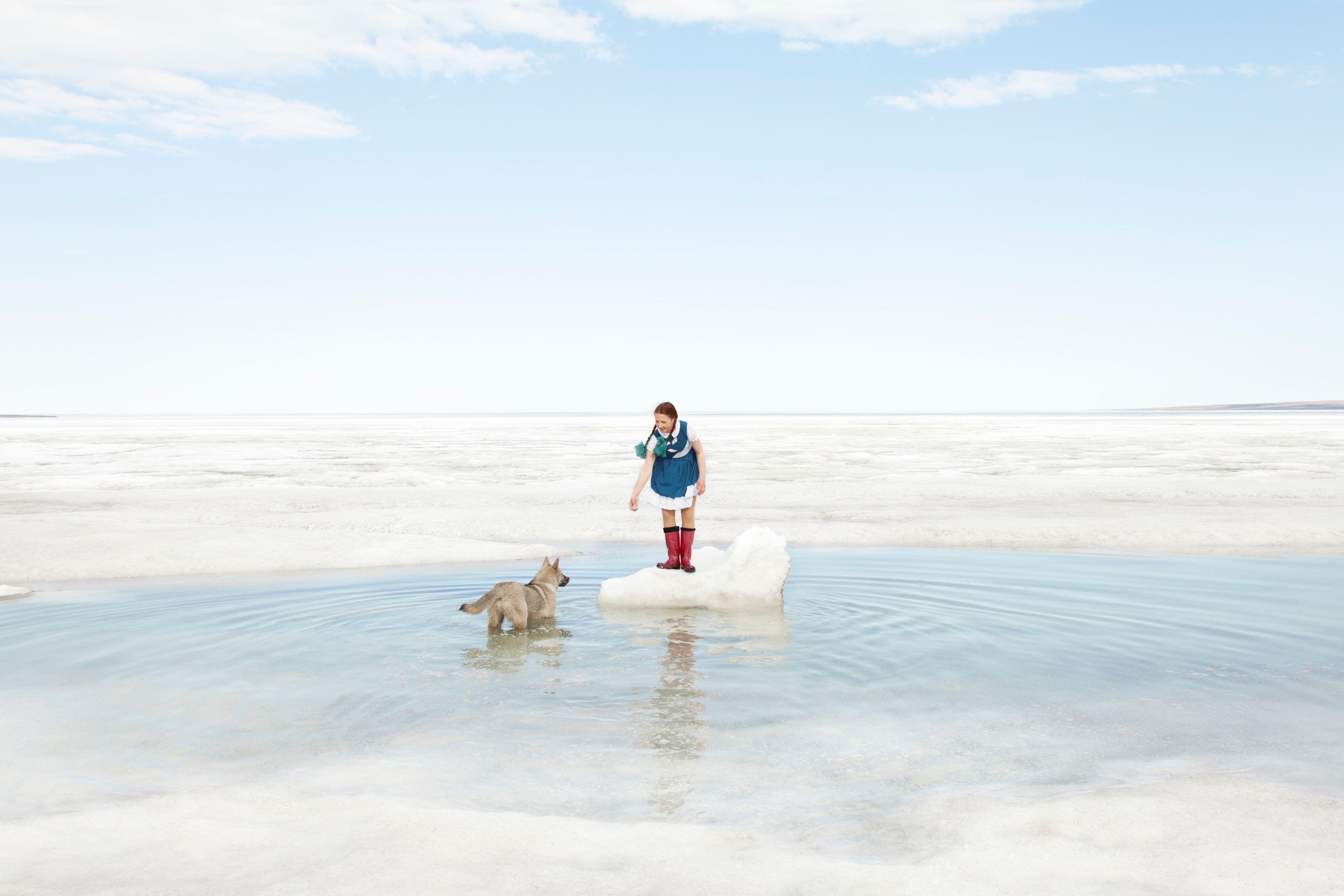
During the polar night, aurora borealis illuminated Arbugaeva’s route to school, where every girl wore the same pink coat, and every boy the same brown button down. During the time of the U.S.S.R.—when scarce supplies were delivered by ship to Tiksi in bulk—embroideries, hand stitched by mothers, would help children identify their clothing and themselves. Where selection was limited, creative minds got to work.
“I feel people have to have so much imagination to use the little things they have and reimagine them,” Arbugaeva says.
Her father indulged her thirst for adventure. He would engineer small parachutes to airdrop her lunch from the window of their fifth-floor apartment onto the playground. He made her feel anything was possible, Arbugaeva says, “Even though I was in Tiksi.”

Despite her natural creativity beginning to blossom when she was young, Arbugaeva planned on taking a “safer route” for her career. She discovered photography in high school while on exchange in Connecticut, and fell in love with it immediately.
“There were cameras and a dark room. It instantly felt like my world rocked so much. I knew at that point exactly what I wanted to do.” The problem was she had an identity crisis. She chose to study management at university in Moscow because she didn’t believe photography could be a career, at least not in Yakutia. But the office didn’t suit her, so she returned to the Arctic to clear her head.
She spent a year working with reindeer herders, who happened to be participants of a feature film in progress. Arbugaeva’s photography caught the eye of the Parisian film crew, who encouraged her to pursue an education in photography.
She thrust herself fully into the art, first attending the International Center of Photography School in New York and then launching her career as a freelancer.
In 2013, she landed her first-ever magazine assignment, and it was for National Geographic. She had photographed mammoth hunters in her home region of Yakutia on her own. The magazine took interest, and she found herself back in the place she loved. Since, she’s documented the Indonesian butterfly trade for the magazine, in addition to numerous communities at the edge of the world.

In many ways, Arbugaeva feels like she’s continuing the legacy of her father. “He’s a very quirky and eclectic person,” she says, revealing that he was responsible for registering a new dog breed–a fluffy Alaskan Husky relative called the Yakutian Laika. Later, he rounded up a pack of the dogs and took Arbugaeva and her brother on a 1500-mile sled journey across New Siberian Islands. The goal was to see the Great Siberian Polynya–a place where the Arctic Ocean doesn’t freeze in winter.
“That’s my dad. He’s like that.”
There weren’t any lengths he wouldn’t go to for his children. In a place where fruit is prized as gold for its rarity, he ensured Arbugaeva and her brother could experience it.
He would point to a poster of a chimpanzee in her room. “He kept saying I’ll go to Africa, and I knew this would happen.” It did.
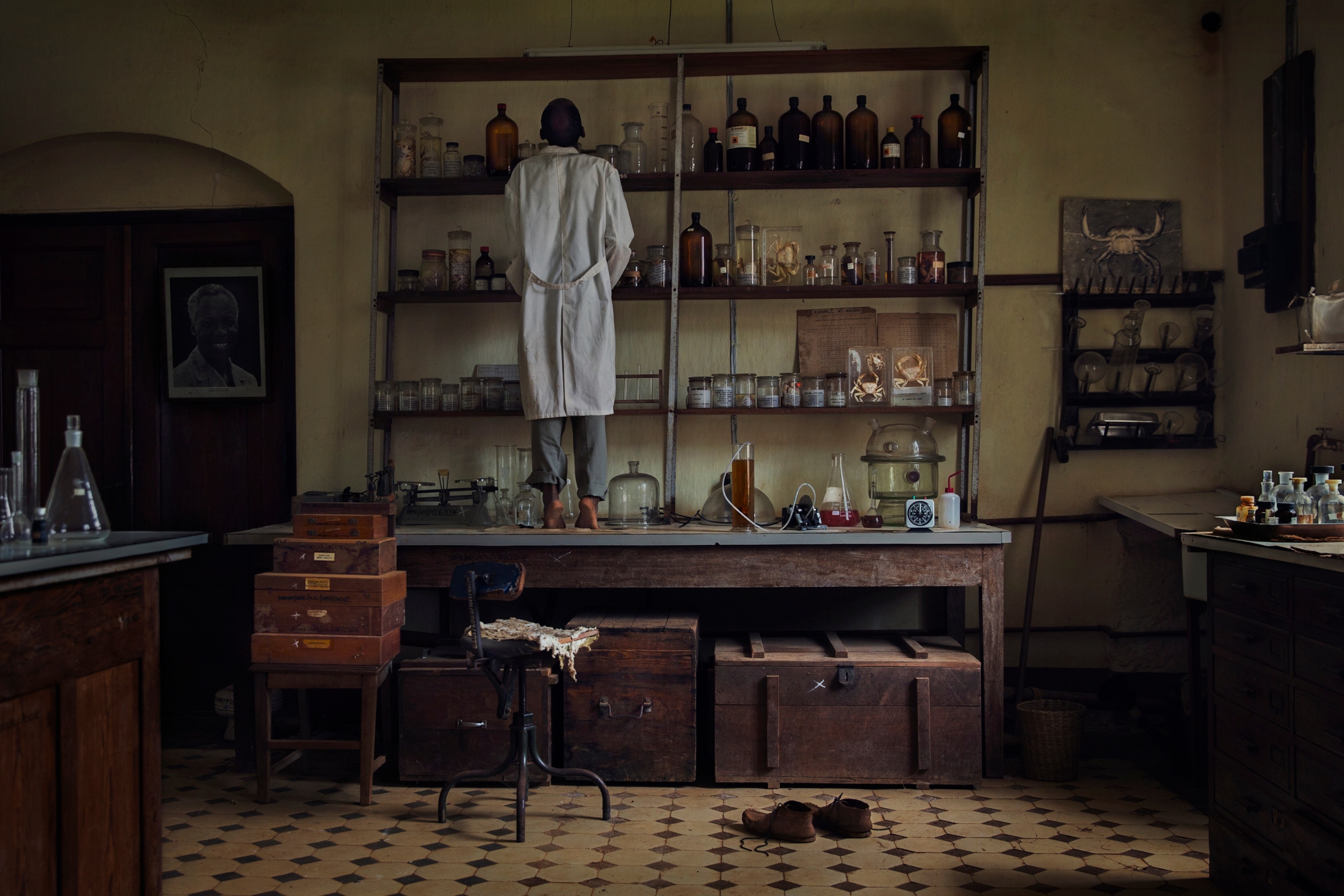

One day, a surprise arrived for Arbugaeva.
“I got a package addressed ‘to Genia–that’s the short of my name–from the monkeys in Africa,’” she recalls. “They were real bananas. I had never seen real bananas.”
Many years later, she found out the effort it took for them to arrive, and not frostbitten. Her father had organized banana transport on a chain of flights by contacting several pilots, and ordering the fruit be wrapped in warm clothing. They were delivered in perfect shape.
“Now, being a parent myself, I think about my childhood. I think these little things really impacted me a lot and shaped me and why I do what I’m doing now.”
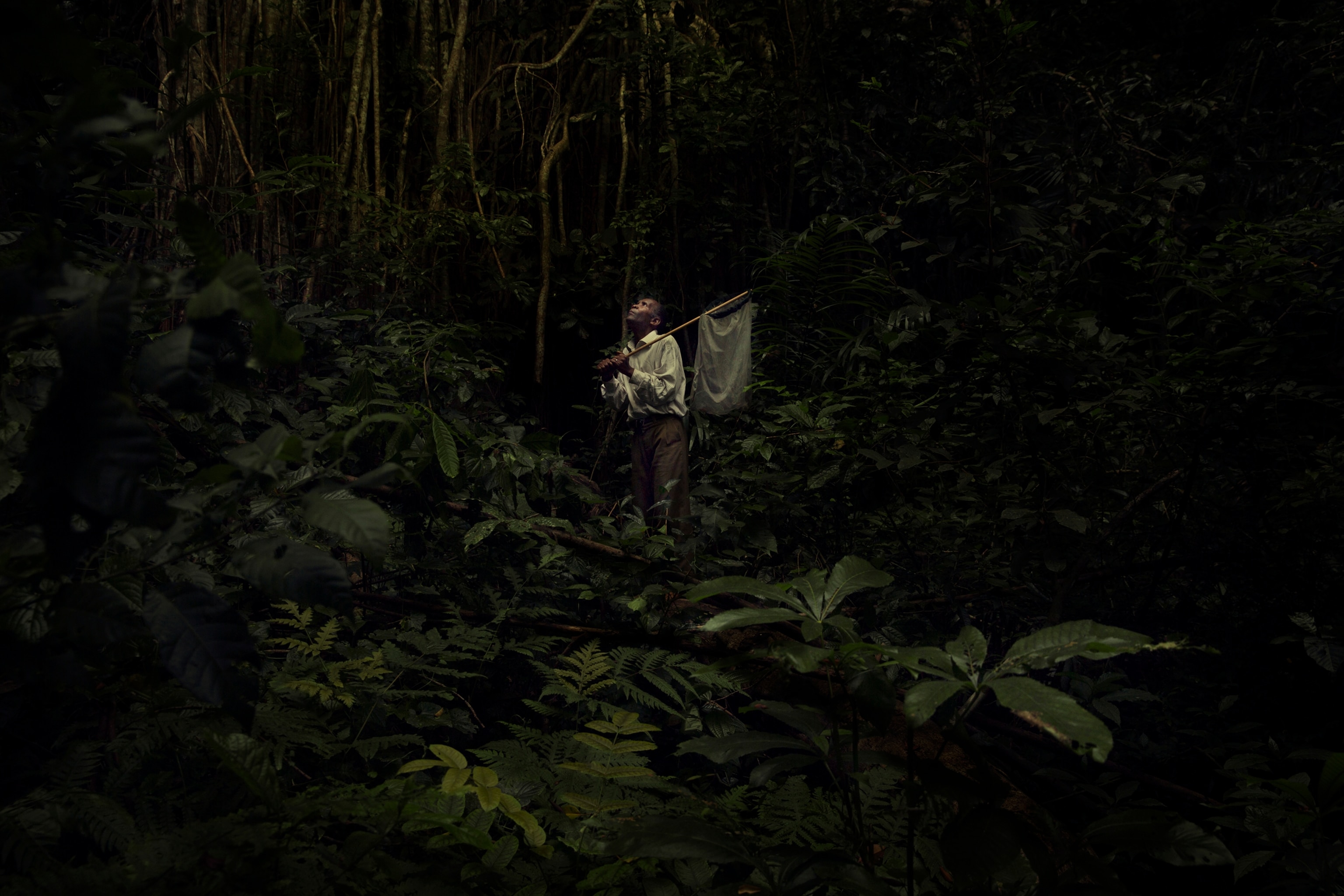
There’s a whimsical, dreamlike quality about the way Arbugaeva documents the world. The eye-popping colors and shadows blur the lines of fact and fantasy. “I like to travel between worlds and time and photograph not only the factual story, but a successful story for me is if I can tell the story happening now, and at the same time weave in memories, the atmosphere, my feelings when I’m there, and feelings of people I meet.”
She guesses growing up in the endless blanket of white had something to do with her craving for color. With nature’s giant canvas as a contrast, any deviations of tone come alive. And after months of complete darkness, to see color is anything but ordinary.
“The setting sun, or the rising sun. For someone who spent all winter in the darkness, finally seeing this pink is a very emotional experience.”

The Arctic way
Arbugaeva is exploring ways to involve more of the senses in her storytelling to deliver a more complete Arctic perspective. Speaking in just the photography language is a challenge, she says, so her latest award-winning and Oscar-nominated project is a film.
For presenting the issue of climate change and the demise of walruses in the Russian Arctic, Haulout is surprisingly and refreshingly calm in its delivery. Part of the reason is Arbugaeva’s philosophy that louder isn’t necessarily better.
“It’s not about screaming the issues because the facts are already screaming for themselves.” From her perspective, she’s just there to help the story be told. “I also wanted to sustain that feeling of how I see the world there, how Chukchi people see the world.”
The mostly silent, cinematic film, which Arbugaeva co-directed with her brother Maxim Arbugaev, follows a marine biologist awaiting the natural event of walrus migration from his tiny hut on the shore of the Chukchi Sea. It turns nightmarish, when an estimated 100,000 walruses, one on top of the other, are suddenly directly outside the wooden hut. It’s a symptom of melting sea ice, which was obsolete that summer. Walruses rely on ice during their migration and feeding. Without it they are forced to come onto land in huge numbers. Exhausted and weak, they are in danger of stampedes and trampling.
It’s a far cry from posing her Arctic home as a magical, welcoming, and sought-after home, but it’s the reality, Arbugaeva acknowledges.
“I feel so much responsibility now to tell these stories. They become darker in tone and message. I cannot think of any other things I should be doing right now.”
Haulout was three months of work condensed into 25 minutes. Each frame could be a still photograph, positioned to near perfection. Though, Arbugaeva jokes that from the safety of the shack she had one angle. There were other challenges as well. “The one thing you cannot show in the film is how bad it smelled. Our eyes were tearing up. It was very claustrophobic.”
It also took patience; getting to their destination, waiting out the weather, preparing for the right time of day. In general, storytelling in the Arctic is like this; it’s slow. Even mentally, Arbugaeva says she has to prepare to go from bustling London life to the silent openness.
.jpg)
Sometimes her work means riding 14 hours by snowmobile, trudging through ice blocks, waiting out storms, and getting comfortable with quiet. But she doesn’t want to sensationalize it. “It’s just a difficulty you need to overcome to get there, it’s part of the job.” It’s also sometimes just quintessential Arctic life.
“I feel that sometimes we get so much credit for being adventurous, but really it’s the people we photograph. We’re just there to experience a little bit of their life, really.”
The Arctic still captures imaginations. If it was easy to reach, endure, and integrate into the Arctic, there would be more stories about it. Arbugaeva’s chronicles leave room for the imagination, continuing the human fantasy of what could exist in the world’s most remote lands.
“To bring back a story takes a lot from you–dedication, time,” Arbugaeva attests. But for the Siberia native, there’s no environment more personal or precious, and the familiarity helps her go beyond the surface. “And I suppose that makes the work,” she explains. “I’m already home.”
ABOUT THE WRITER
For the National Geographic Society: Natalie Hutchison is a Digital Content Producer for the Society. She believes authentic storytelling wields power to connect people over the shared human experience. In her free time she turns to her paintbrush to create visual snapshots she hopes will inspire hope and empathy.

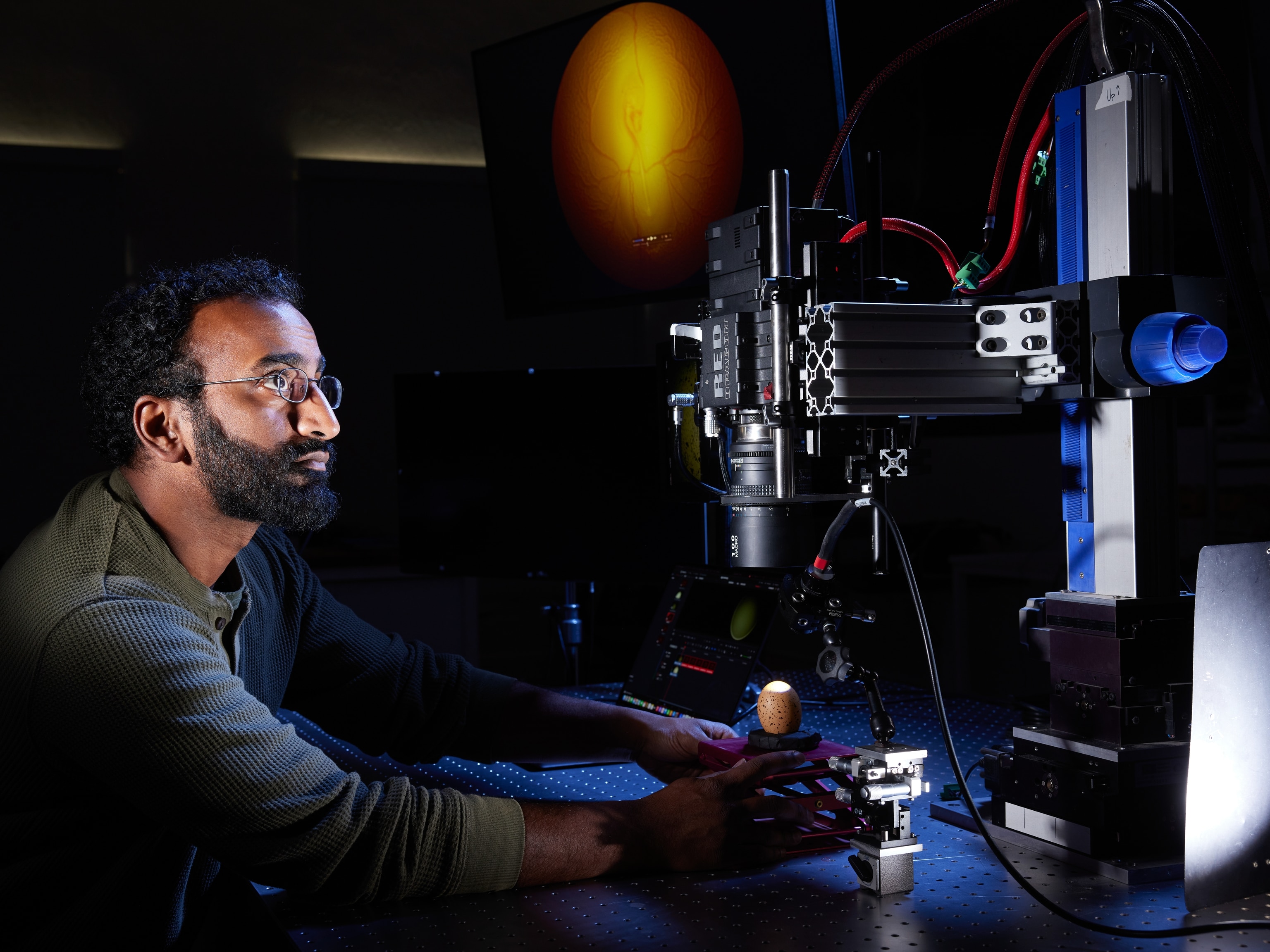
_4x3.jpg)
